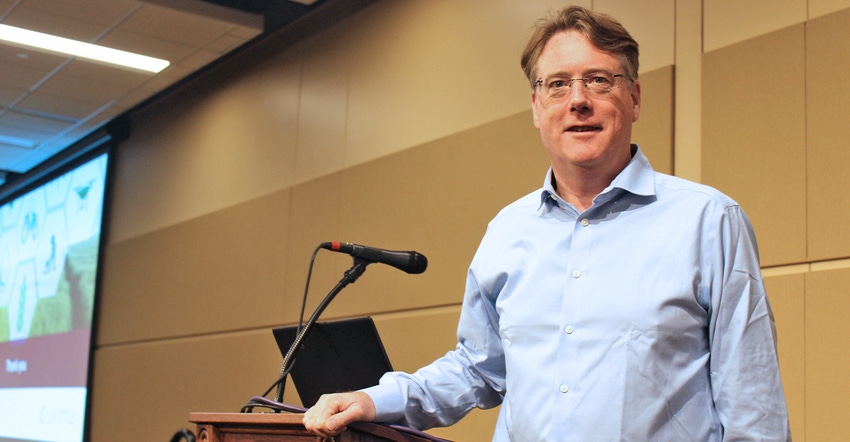
Growing world population and growing dairy demand means today’s dairy cow will need to double her production by 2067, Aidan Connolly told attendees at the 2nd International Precision Dairy Farming Conference.
Connolly, president of Agritech Capital based in Wilmington, N.C., was a keynote speaker at the event, held in Rochester in June.
Milk production has increased by 61% in the last 25 years, he said, and digital technologies can help farmers continue to grow production.
“The ability to use precise, real-time, smart data that can be monitored and converted to insights upon which farmers can base data-driven decisions is a game changer,” he said. “And, it’s not just a game changer at farm level, consumer concern for animal welfare and sustainability can also be addressed with digital technologies.”
Here’s a look at digital technology in the dairy sector:
1. Sensors. According to Connolly, sensors are where the most success has been so far.
“Sensors can fill in the data gap in dairy farming,” he said. Wearable technologies allow farmers to monitor individual cows and perhaps react even before a cow shows visible signs of illness. Other sensors can be implanted subcutaneously or inside the rumen. Sensors can detect lack of movement, lack of rest, digestive problems, heat and contractions.
2. Artificial intelligence. Artificial intelligence allows producers to analyze the data that sensors collect. It can completely transform how a dairy farm operates by mimicking human decision making.
3. Drones. Unmanned aerial vehicles can be used to inspect the herd or fences. However, they may disturb the cattle as is the case in hog and poultry facilities, Connolly said.
4. Robots. Another area making headway is robotics, Connolly said, with robotic milkers being the best-known robots in the dairy sector. Other robots include a rotary platform and a grazeway system that only allows cows access to pasture after they’ve been milked.
5. 3D printing. 3D printing offers the ability to create parts, and 3D printed foods are emerging as well. A startup company from San Francisco is using 3D printing combined with gene sequencing to create a yeast fermentation product that looks and tastes like milk.
6. Virtual reality. Connolly said virtual reality is already being used in veterinarian training, particularly in the United Kingdom. Other applications include virtual farm tours. The Hamra Farm in Sweden is showcased in a virtual reality tour.
7. Augmented reality. The middle ground between reality and virtual reality, augmented reality adds information that the human eye can’t see. It can be used as an alternative way to monitor cows, Connolly said, suggesting it could be used by a veterinarian to make a prescription in lieu of a farm visit.
8. Blockchain. Blockchain technology provides supply chain traceability for every step of the food production process.
9. Internet of Things. The connectivity of all of these technologies could not be possible without the Internet of Things, which is the connection of the internet to physical devices and common objects
“Frankly, there are just tremendous opportunities out there for all of you that see the opportunities,” Connolly said.
Kubat Willette is a Farm Progress digital content creator.
About the Author(s)
You May Also Like




